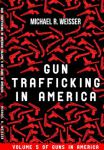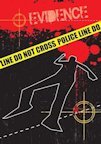This week the online version of JAMA contained an important editorial by two noted gun violence researchers. Their editorial followed from a February “call to action” issued by the eight leading professional medical organizations promoting the idea of greater physician engagement in dealing with gun violence, notwithstanding the attempts by the NRA to legally de-legitimize the ability of doctors to talk to patients about guns.
The authors of the editorial, Drs. Marion Betz and Garen Wintemute, believe that physicians need to develop what they refer to as better ‘cultural competencies’ in order to overcome the alleged suspicions that gun owners harbor about medical professionals who try to talk about their ownership and/or use of guns. I say ‘alleged’ because I have yet to see a single, bone-fide survey that actually quantifies the anti-physician attitudes the NRA has worked so hard to stir up. The fact that a group of red-meat Florida legislators say “yip’ every time that the NRA lobbyist Granny Hammer says ‘yap,’ doesn’t prove anything at all about how the average gun owner would feel if his doctor initiated a conversation about guns.
 Betz&Wintemute present no data on the attitudes of gun-owning patients but there are surveys of physicians which indicate that the majority of medical professionals don’t know enough about guns to feel comfortable raising the issue of gun violence within the context of clinical care. And the authors are certainly correct in calling for the medical community to find ways to remedy their lack of communication skills. But with all due respect to the very important research conducted by Betz&Wintemute over the years, I am still not convinced that a growth of cultural competence in the area of gun violence should primarily focus, as they suggest, on counseling about the safe use and storage of guns.
Betz&Wintemute present no data on the attitudes of gun-owning patients but there are surveys of physicians which indicate that the majority of medical professionals don’t know enough about guns to feel comfortable raising the issue of gun violence within the context of clinical care. And the authors are certainly correct in calling for the medical community to find ways to remedy their lack of communication skills. But with all due respect to the very important research conducted by Betz&Wintemute over the years, I am still not convinced that a growth of cultural competence in the area of gun violence should primarily focus, as they suggest, on counseling about the safe use and storage of guns.
In 2013, as the authors note, 117,894 men and women were killed or wounded with guns. But less than 15% of these injuries were considered accidents, or what the CDC calls unintentional events. Now don’t get me wrong: 17,369 accidental shootings is a serious health issue in and of itself. And anything that can be done to lessen the impact of these events on the victims, their families and the medical system which has to respond to the problem should certainly be put into effect. But what makes gun violence such a disturbing social and medical phenomenon is the fact that each year at least 100,000 among us make the conscious, often impulsive decision to pick up a gun and use it to shoot ourselves or someone else. Last year the CDC called 24,000 Ebola cases in Central Africa an “epidemic.” What do you call 100,000 cases of gun violence in the U.S. every year? A day at the beach?
If the medical community is going to take a more dynamic approach to gun violence, I think that increasing communication skills regarding safe storage and gun safety is putting the cart before the horse. Betz&Wintemute are correct in suggesting that effective counseling has to reflect the individualized nature of every clinical interaction, but the real problem that physicians face is not learning how to tell a gun-owning patient to lock up or lock away the guns; it’s learning how to identify patients who are prone to engage in gun violence, regardless of how they store their guns.
Adam Lanza’s mother dragged him from one shrink to another. At no time did a medical professional ask why her home was virtually littered with guns. Elliott Rodger, who shot 17 people in Isla Vista, California, had been seeing therapists since he was eight years old. Not a single medical society has yet to adopt clinical guidelines to help physicians identify at-risk patients before they pull out a gun. Doctors are hardly the only group who can give advice on safe storage of guns. But what only they can do is identify and treat risks to health. And anyone who believes that a gun doesn’t represent a health risk doesn’t know much about either one.



Recent Comments